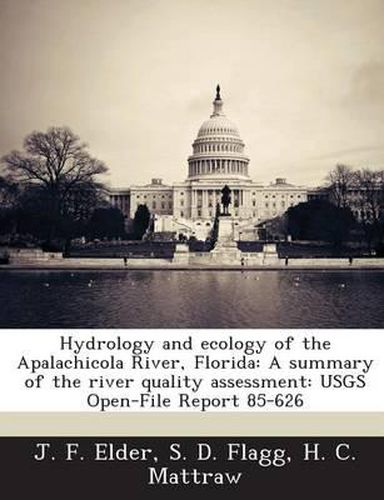Readings Newsletter
Become a Readings Member to make your shopping experience even easier.
Sign in or sign up for free!
You’re not far away from qualifying for FREE standard shipping within Australia
You’ve qualified for FREE standard shipping within Australia
The cart is loading…






During 1979-81, the U.S. Geological Survey conducted a large-scale study of the Apalachicola River in northwest Florida, the largest and one of the most economically important rivers in the State. Termed the Apalachicola River Quality Assessment, the study emphasized interrelations among hydrodynamics, the flood-plain forest, and the nutrient-detritus flow through the river system to the estuary. This report summarizes major findings of the study. Data on accumulation of toxic substances in sediments and benthic organisms in the river were also collected. Because of the multiple uses of the Apalachicola River system, there are many difficult management decisions. The river is a waterway for shipping; hence there is an economic incentive for modification to facilitate movement of barge traffic. Such modifications include the proposed construction of dams, levees, bend easings, and training dikes; ditching and draining in the flood plain; and dredging and snagging in the river channel. The river is also recognized as an important supplier of detritus, nutrients, and freshwater to the Apalachicola Bay, which maintains an economically important shellfish industry. The importance of this input to the bay creates an incentive to keep the river basin in a natural state. Other values, such as timber harvesting, recreation, sport hunting, nature appreciation, and wildlife habitat, add even more to the difficulty of selecting management strategies. Water and nutrient budgets based on data collected during the river assessment study indicate the relative importance of various inputs and outflows in the system. Waterflow is controlled primarily by rainfall in upstream watersheds and is not greatly affected by local precipitation, ground-water exchanges, or evapotranspiration in the basin. On an annual basis, the total nutrient inflow to the system is nearly equal in quantity to total outflow, but there is a difference between inflow and outflow in the chemical and physical for
$9.00 standard shipping within Australia
FREE standard shipping within Australia for orders over $100.00
Express & International shipping calculated at checkout
During 1979-81, the U.S. Geological Survey conducted a large-scale study of the Apalachicola River in northwest Florida, the largest and one of the most economically important rivers in the State. Termed the Apalachicola River Quality Assessment, the study emphasized interrelations among hydrodynamics, the flood-plain forest, and the nutrient-detritus flow through the river system to the estuary. This report summarizes major findings of the study. Data on accumulation of toxic substances in sediments and benthic organisms in the river were also collected. Because of the multiple uses of the Apalachicola River system, there are many difficult management decisions. The river is a waterway for shipping; hence there is an economic incentive for modification to facilitate movement of barge traffic. Such modifications include the proposed construction of dams, levees, bend easings, and training dikes; ditching and draining in the flood plain; and dredging and snagging in the river channel. The river is also recognized as an important supplier of detritus, nutrients, and freshwater to the Apalachicola Bay, which maintains an economically important shellfish industry. The importance of this input to the bay creates an incentive to keep the river basin in a natural state. Other values, such as timber harvesting, recreation, sport hunting, nature appreciation, and wildlife habitat, add even more to the difficulty of selecting management strategies. Water and nutrient budgets based on data collected during the river assessment study indicate the relative importance of various inputs and outflows in the system. Waterflow is controlled primarily by rainfall in upstream watersheds and is not greatly affected by local precipitation, ground-water exchanges, or evapotranspiration in the basin. On an annual basis, the total nutrient inflow to the system is nearly equal in quantity to total outflow, but there is a difference between inflow and outflow in the chemical and physical for